Note: This website was automatically translated, so some terms or nuances may not be completely accurate.
What defines a globally competitive brand in Japanese manufacturing?
This series explores the secrets behind "vibrant companies" with originality, as uncovered by Dentsu Inc. 'Company Design' team. The fifth installment features Minimal – Bean to Bar Chocolate –, a company dedicated to providing "specialty chocolate" akin to wine or coffee.
Minimal is a young company, established just over six years ago. However, its approach – handling the entire process from sourcing cacao beans to producing chocolate in-house – reveals not only innovation but also a robust, almost nostalgic Japanese manufacturing philosophy. In an era demanding efficiency, why deliberately go against the grain? What explains the success of a single chocolate bar selling for as much as 1,500 yen? By speaking with its 36-year-old leader about the mechanisms, background, and underlying vision, we aim to unravel the "secret of a thriving company."
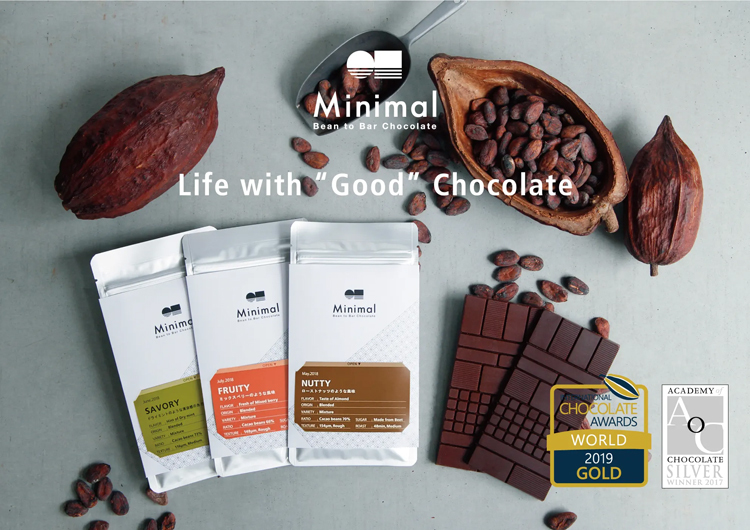
It doesn't have to be complicated. Simply put, if I find something delicious, enjoyable, or moving, I want to recognize it as good. As an interviewer, I deeply resonated with President Yamashita's philosophy.
Minimal began when President Takatsugu Yamashita, originally a corporate management consultant, encountered Bean to Bar chocolate and was moved by its flavor that truly brought out the natural taste of cacao.
"I want to reinvent chocolate," says President Yamashita. Using only 100% fair trade cacao and sugar, he expresses the delicate artistry of Japanese craftsmanship through his chocolate and aims to compete globally. Even now, amidst many challenges including the pandemic—or perhaps because of them—the number of fans is steadily growing, and sales are increasing. We absolutely wanted to uncover the secret behind this company's vitality.
Written by: Dentsu Inc. First Integrated Solutions Bureau, Taiki Kawase
Competing Globally with Japanese Precision
"I was born in 1984 and never knew Japan's so-called golden age," President Yamashita began. "But even though people say the economy isn't doing well, Japan and the Japanese have incredible history, culture, and technological prowess, right? How can we showcase that? That was my motivation for starting this company." According to President Yamashita, the era of winning through economies of scale is long gone. Now is the time to take on the world through quality. When it comes to quality, Japanese technology is among the world's best.
Ah, this isn't the time to be doing consulting. I wanted to revitalize this country through manufacturing as a participant, not as an impartial consultant, and bring smiles to people worldwide. That, he says, was the biggest reason he started his own business at age 30.
It wasn't simply about wanting to make money as a business. He wanted to enrich Japan 50 or 100 years into the future. What could he do to achieve that? It was while pondering this that he encountered chocolate.
Chocolate is often described as a "Bean to Bar" product. Most of the people growing the beans are in developing countries. Their beans are bought cheaply at international market prices, processed in mass production to make inexpensive chocolate products, and then distributed to the market. For producers in developing countries, prices are dictated by the international market, leaving them with no choice. This just didn't feel right! President Yamashita's passion intensified.
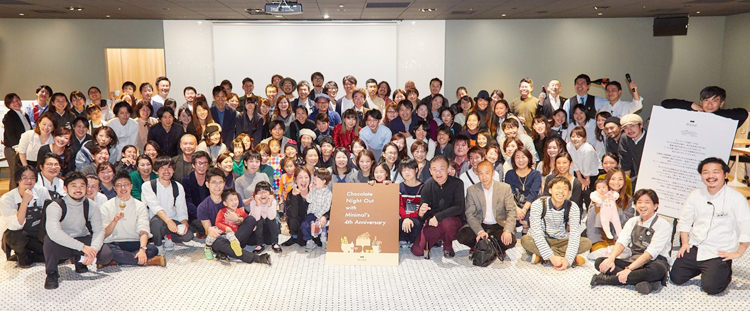
The key is creating products through "subtraction"
"My initial thought was: Couldn't we make chocolate a 'subtraction' product?" President Yamashita's comment began from an unexpected angle. The conventional wisdom for chocolate has been to process the raw cacao beans, add various types of oils, then keep adding nuts, fruits, and all sorts of things to create the final product. You could say that's the global norm. But the Japanese palate's norm is different.
The focus is on the quality of the ingredients themselves, and how simply yet profoundly that quality can be expressed. If conventional chocolate has been built on the concept of "addition," then introducing the concept of "subtraction" could surely create something that would astonish the world. That intuition gave birth to the Minimal brand.
It's about uncompromising flavor. It's about chocolate that complements any dessert and offers new possibilities for any dessert. I was amazed by this creative vision. It's not the marketing of the past, like "Yamashita-brand chocolate is delicious! And it's only 150 yen!" Instead, it's a perspective focused on enhancing the market value of chocolate itself by getting to the core of its appeal and essence. What struck me first was the realization that things like the "Yamashita Brand" or "price" are secondary; the core motivation stems from the philosophy: "Can we make the world better?" and "Can we offer the world surprises and excitement it's never experienced before?"
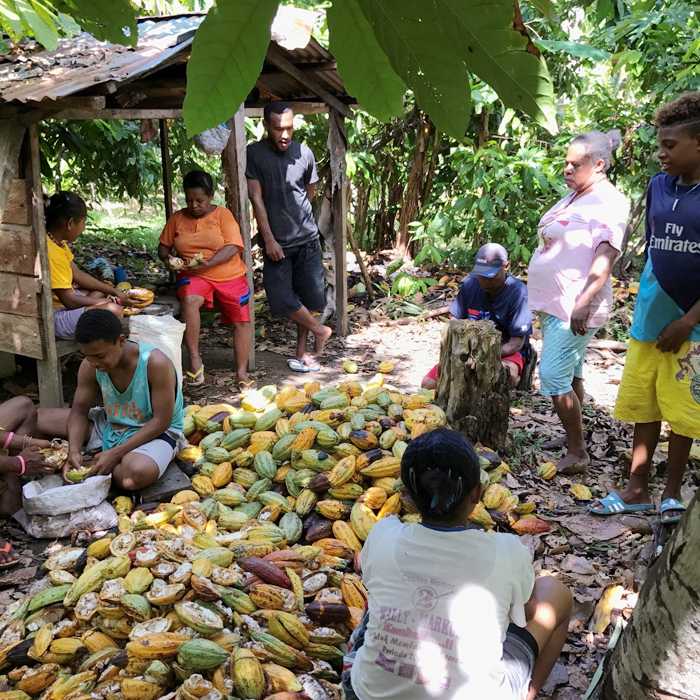
What matters is a "change in mindset"
"When people think of marketing, they often imagine finding the greatest common denominator and investing where the risk of failure is minimized, right? I don't think that's right," says President Yamashita. What's important, he says, is fostering a change in mindset.
For example, it's common knowledge that a bar of chocolate costs around 150 yen at a convenience store. Paying 1,500 yen for such a bar? That's something only a wealthy person would do. "Honestly, I don't know if Minimal's chocolate is worth ten times that of regular chocolate. You can't quantify taste," President Yamashita points out.
What's crucial here is a shift in mindset. It's about gaining that shared understanding: "Ah, with this level of quality, it's worth paying 1,500 yen." President Yamashita states that to achieve that shared understanding, he spares no effort. This applies to both the manufacturing process and PR activities. It's not about selling to make a profit. "Don't you think this is wonderful? Don't you think it makes life a little happier?" He wants people to recognize and share that feeling. For President Yamashita, it just happened to be chocolate.

What we want to create isn't just chocolate, but specialty chocolate.
"I want to reinvent chocolate" is President Yamashita's conviction. He explains that a chocolate product's quality is largely determined by four factors: the quality of the cacao (origin), roasting, grinding method, and the percentage of ingredients blended. Ah, so it's those four. That sounds like a layman's perspective, but if you experiment with permutations and combinations of those four, you'd end up with an astronomical number of possible patterns.
President Yamashita states, "People spend money on things they find 'cool.' That's the era we're in now." It's not about efficiency or market value; if something feels "Ah, this is good," people will spend money on it. This applies to clothes, music, anything.
That's precisely why he wants to change the concept of chocolate, the president says. He doesn't want to make premium chocolate, but specialty chocolate. Not some high-end chocolate beyond existing concepts, but chocolate that surprises you: "Wait, you can make a dessert like this with chocolate?" Chocolate that makes you proud you recognized its value. Chocolate that makes you feel that way. This isn't limited to chocolate alone. I think it's what's being demanded now of all products, services, and everything in the world.
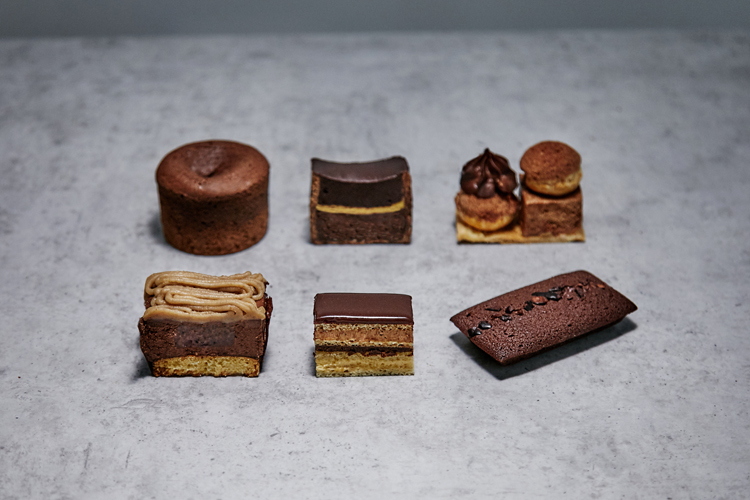
Building a brand means expanding the "surface area of beauty"
Preceded by the disclaimer, "This might be preaching to the choir for Dentsu Inc.", President Yamashita pointed out that "building a brand is the work of expanding its surface area." Expanding the surface area that everyone can relate to. Connecting through products that everyone finds appealing. At its core, of course, are things like "value" and "convenience."
But true resonance lies elsewhere. People are captivated by the presence that evokes feelings like "How cute," "How endearing," or "How beautiful." Underpinning this is something profound: tradition and culture. Hearing the president of a 500-year-old wagashi maker say something like, "It's still just a trial product, about 48 years into prototyping," sends shivers down my spine as someone involved in making things. President Yamashita's comments make even me, the interviewer, feel that thrill.
President Yamashita spoke rapidly about their swift response during the pandemic, the mindset shift among employees and artisans, the complete overhaul of the manufacturing process to enable free shipping, the fundamental shift to online sales, the significance of these changes, and their future outlook. I was overwhelmed by his bubbling passion – far too much to cover in just an hour and a half interview.

Visit Minimal's homepage here.
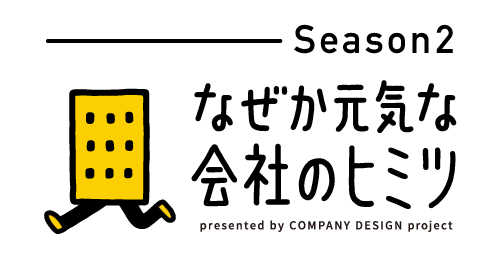 Season 2 of Dentsu Inc. 'Company Design' team's series exploring the secrets of 'vibrant companies' with 'originality.' Episode 5 featured Minimal – Bean to Bar Chocolate – a specialty chocolate company.
Season 2 of Dentsu Inc. 'Company Design' team's series exploring the secrets of 'vibrant companies' with 'originality.' Episode 5 featured Minimal – Bean to Bar Chocolate – a specialty chocolate company.
Season 1 of the series can be found here.
The "Company Design" project site is here.
[Editor's Note]
After the interview, I deliberately asked President Yamashita, who speaks with the logical precision typical of his consulting background, a childlike question: "Why chocolate?" President Yamashita's conviction has always been consistent: "I want the world to recognize the excellence of Japan, or rather, of the Japanese people." If that were the case, common sense would suggest traditional Japanese sweets, sake, kimono, or Japanese tableware.
His answer was remarkably simple. One reason was his encounter with artisans. When he asked, "Is there orange or something mixed in this chocolate?" in surprise at its flavor, he was told, "No, just cacao beans." Why? How could it achieve such a rich, aromatic taste? Pursuing this led him to discover that cacao beans become chocolate ingredients through fermentation at their origin. This, he said, was the second reason.
Speaking of fermentation, it's a field where the Japanese excel. Soy sauce, miso, sake, mirin, funazushi, kusaya – these are the crystallizations of traditional techniques the Japanese take pride in. He was driven by the intuitive thought: "If I, a Japanese person, made chocolate, wouldn't something incredible come out of it?" That idea is incredible. When we hear "globalism," we tend to think of imitating Western culture and methods, but that's not it. True globalization means having the world recognize your own country's proud culture and technology.
Was this article helpful?
Newsletter registration is here
We select and publish important news every day
For inquiries about this article
Back Numbers
Author

Kawase Taiki
Dentsu Inc.
First Business Transformation Bureau
Art Director
Working alongside executives and brand managers, we create integrated creative solutions centered on customer experience—from service and brand development to corporate branding and communications. We have received over 90 awards globally, including Cannes Lions, CLIO, SABER, and the Good Design Award.



